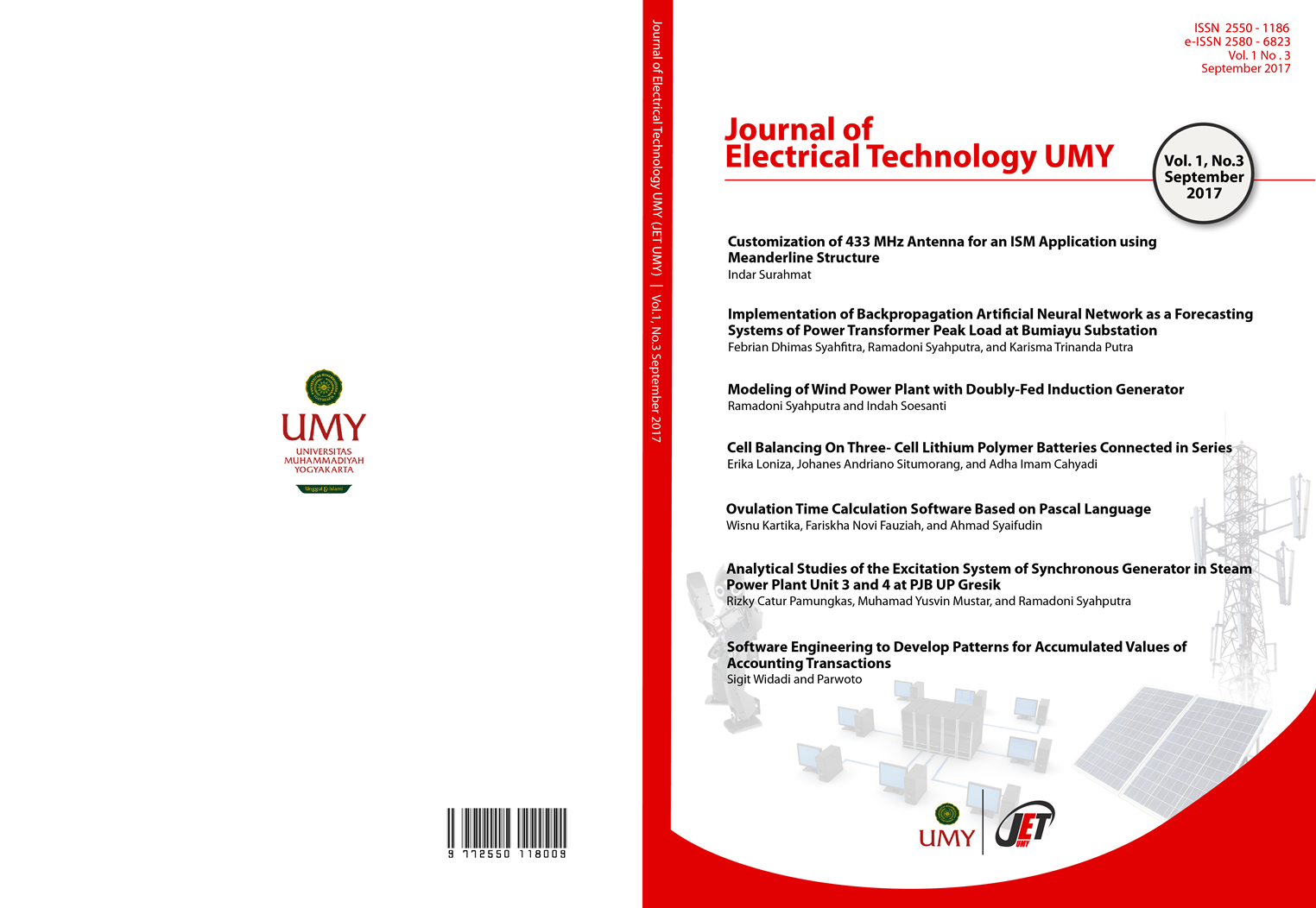Software Engineering to Develop Patterns for Accumulated Values of Accounting Transactions
DOI:
https://doi.org/10.18196/jet.1321Keywords:
configuration, transaction mapping, double entry system, accounting information system, accumulationAbstract
Software for accounting information systems has its own peculiarities, because the transaction data is recorded in pairs over a period of time, must be traceable and can be seen again in the future at the time period desired by the user according to the accountability of financial information systems. This research presents a prototype development technique about inter-account configuration in the accounting structure and aims to provide technical assistance on how to develop a pattern of financial transaction information presentation on a double entry record system model using financial applications. Relational data set theory and concepts are used as a scientific explanation framework on how the correlation between accounts can be constructed mathematically so that the concepts can be understood by programmers when they develop software. The result of this study has been tested by applying to the financial applications in one of the microfinance institutions and it can work properly. The prototype development techniques of this research can be applied to the software development in the business field, such as services, manufacturing and trade byimplementing in the form of the software configuration system tools. furthermore, the financial application developers are expected to utilize this prototype development technique to produce more dynamic software as a financial data processor according to the accounting rules in the business organizations.
References
Abdul Kadir.2003, Dasar Perancangan Dan Implementasi Database Relasional. Yogyakarta: Andi offset
Charles, Horngren. 2003. Akuntansi Biaya Penekanan Manajerial Jilid satu. Jakarta: PT. Indeks Kelompok Gramedia
Dwi Prastowo dan Rifka Juliaty. 2005. Edisi Revisi Analisis Laporan Keuangan . Yogyakarta : Unit Penerbit Dan Percetakan AMP YKPN
Harahap, Sofyan Sahri. 2010. Teori Akuntansi. Edisi Revisi 2010 . Jakarta: Rajawali Press
Howe, D.R. 1991. Data analysis for data base design. Chapman and Hall, Inc. New York
JIBI. (2013, 11 27). bisnis jateng. Retrieved 09, 10, 2017, from semarang.bisnis.com: http://semarang.bisnis.com/read/20131127/
/68767/lembaga-keuangan-mikro-masukradar-otoritas-jasa-keuangan
Jogiyanto, HM. 2007. Analisis dan Desain Sistem Informasi: Pendekatan Terstruktur Teori dan Praktik Aplikasi Bisnis. Yogyakarta: Andi Offset.
Keputusan Menteri Keuangan RI (NO. 476 KMK. 01 1991 Tentang Pedoman Kapitalisasi Barang Milik/Kekayaan Negara Dalam Sistem Akuntansi Pemerintah, Jakarta: Sekretariat Kabinet Nomor 143
Leman, 1997 Metodologi Pengembangan Sistem Informasi, PT. Elex Media Komputindo, Jakarta
McLeod, Raymond Jr. 2002. Sistem Informasi Manajemen Jilid 2. PT Prenhallindo : Jakarta
Mursita, Danang. 2002. Matematika Dasar. STTTELKOM: Bandung.
Noel Carroll,Eoin Whelan,Ita Richardson. 2015. “Understanding the Value of Business Process Configuration”,University Of Limerick. Ireland.
Sugiyono, 2013. Metode Penelitian Kuantitatif. Bandung:Alfabeta
Sutabari, Tata, 2004, Sistem Informasi Akuntansi, Yogyakarta : Andi.
Suwardjono, 2005, Teori Akuntansi : Perekayasaan Pelaporan Keuangan Edisi ke-3, Badan Penerbitan Fakultas Ekonomi UGM, Yogyakarta
Downloads
Published
How to Cite
Issue
Section
License
Copyright
The Authors submitting a manuscript do so on the understanding that if accepted for publication, copyright of the article shall be assigned to Journal of Electrical Technology UMY. Copyright encompasses rights to reproduce and deliver the article in all form and media, including reprints, photographs, microfilms, and any other similar reproductions, as well as translations.
Authors should sign Copyright Transfer Agreement when they have approved the final proofs sent by the journal prior the publication. JET UMY strives to ensure that no errors occur in the articles that have been published, both data errors and statements in the article.
JET UMY keep the rights to articles that have been published. Authors are permitted to disseminate published article by sharing the link of JET UMY website. Authors are allowed to use their works for any purposes deemed necessary without written permission from JET UMY with an acknowledgement of initial publication in this journal.
License
All articles published in JET UMY are licensed under a Creative Commons Attribution-ShareAlike 4.0 International (CC BY-SA) license. You are free to:
- Share — copy and redistribute the material in any medium or format
- Adapt — remix, transform, and build upon the material for any purpose, even commercially.
The licensor cannot revoke these freedoms as long as you follow the license terms. Under the following terms:
- Attribution — You must give appropriate credit, provide a link to the license, and indicate if changes were made. You may do so in any reasonable manner, but not in any way that suggests the licensor endorses you or your use.
- ShareAlike — If you remix, transform, or build upon the material, you must distribute your contributions under the same license as the original.
- No additional restrictions — You may not apply legal terms or technological measures that legally restrict others from doing anything the license permits.







